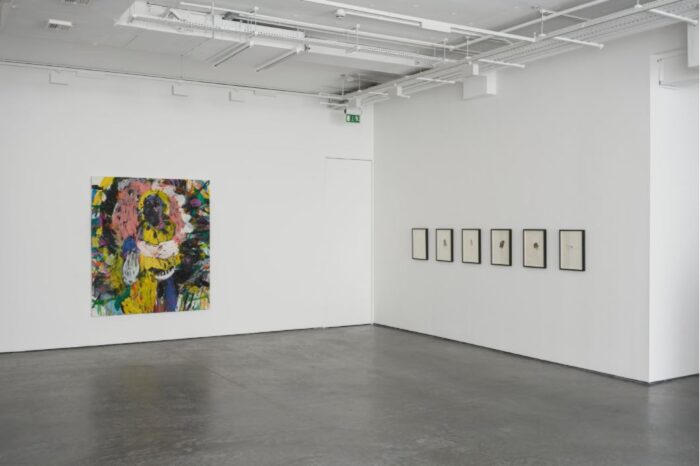
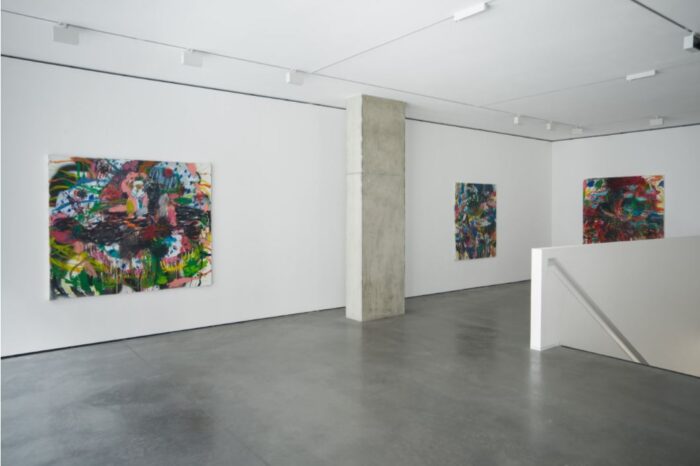
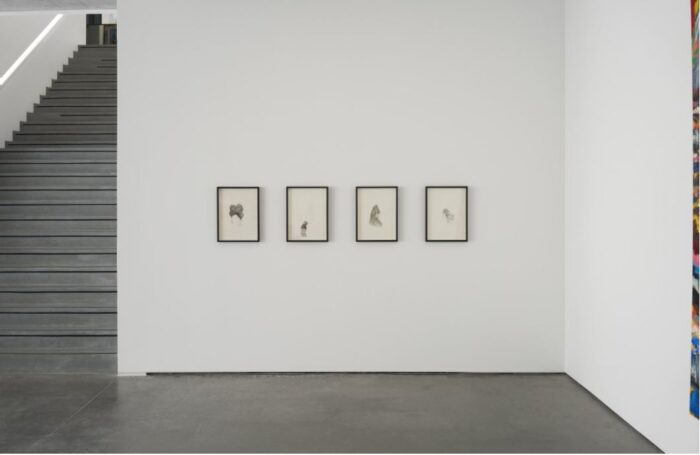

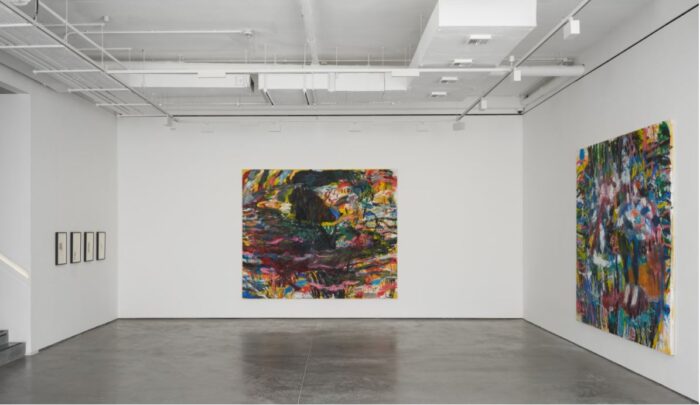
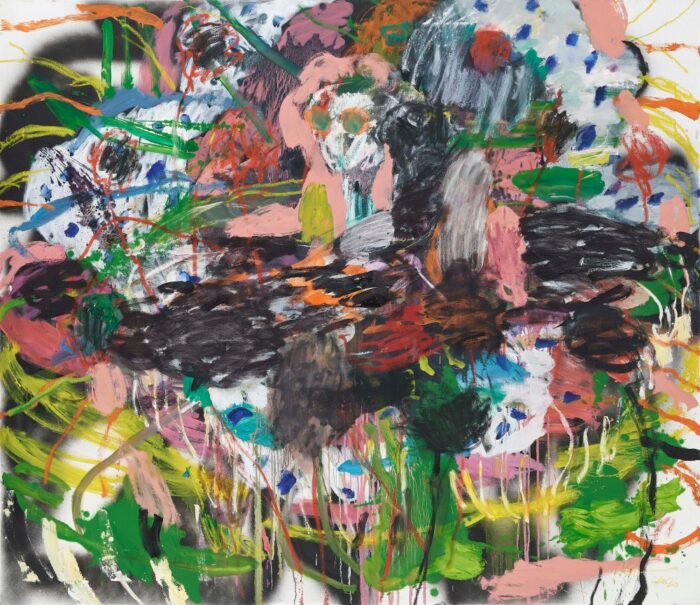
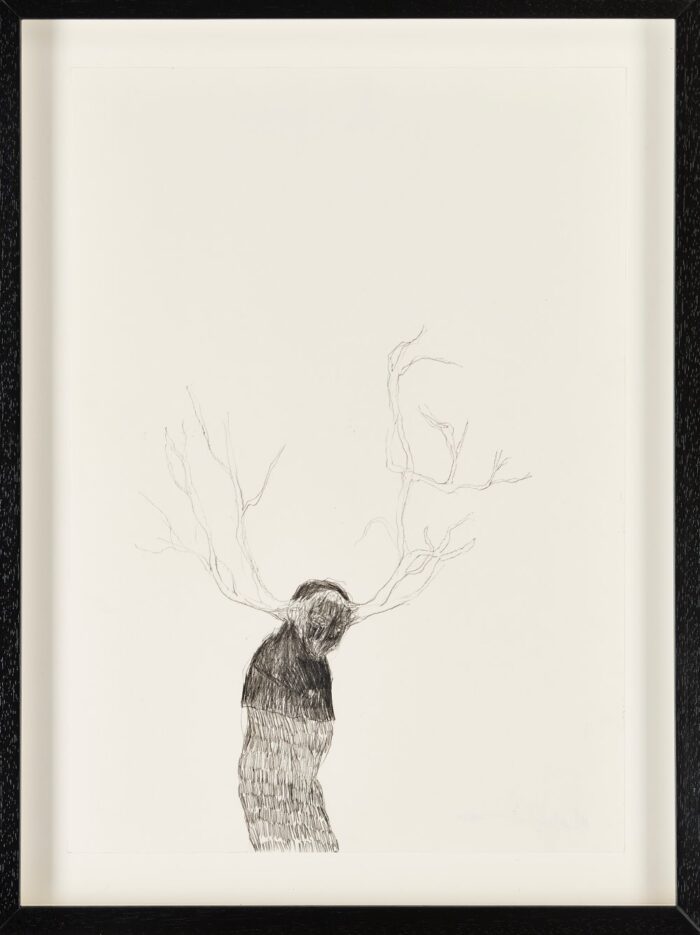
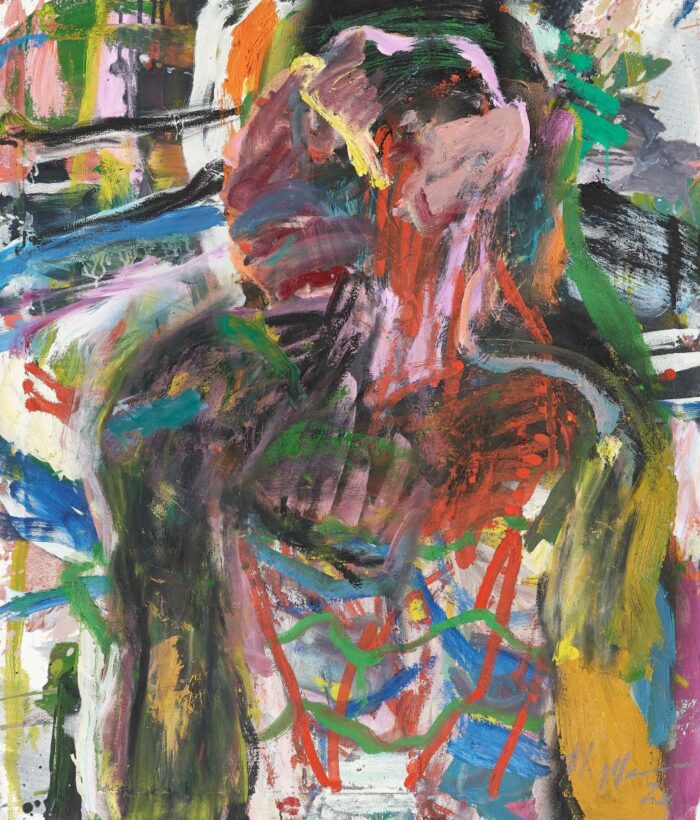
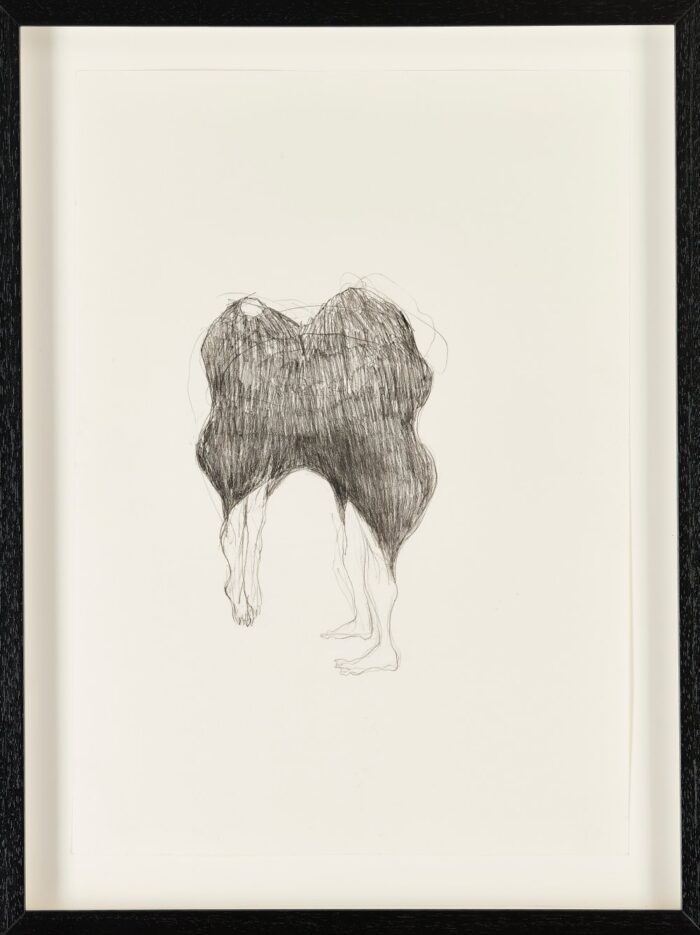

Misheck Masamvu: Talk to me while I’m eating at Goodman Gallery, London
16 Jan 2021 – 27 Feb 2021
All Images courtesy of Goodman Gallery
Talk to me while I’m eating marks Masamvu’s first solo exhibition in the United Kingdom, bringing a selection of never before exhibited works produced in Harare during 2020 in which the artist continues to unpack the human condition in relation to the natural world.
Masamvu’s brushstrokes exist as remnants of the physical action of painting in which multiple temporalities are included in a single image with several layers of imagery beneath the surface. The outcome is a porous pictorial space, one that moves between representational clarity and abstract abundance.
Masamvu’s multidisciplinary practice explores the socio-political setting of post-independence Zimbabwe. His work draws attention to the impact of economic policies that sustain political turmoil and raises questions around what it means to preserve a state of being with dignity. Central to his painting practice is a strategic approach to combining abstraction and figuration through which the artist considers a possible language for redemptive space:
“I use figuration and abstraction in my work because I am looking for an alternative space – one that is against the forced ideology of government and the breakdown of the pursuit of humanity. For this, the symbolism of the landscape and the figure in constant states of entangled metamorphosis are important. I am aware of the communion of the body, the soil and spirit and am interested in how transfiguration and memoirs of body and soul can evoke a real sense of vulnerability” – Masamvu.
Across Masamvu’s oeuvre, figures appear within abstracted landscapes into which they seem to be amalgamating. This process of assimilation into the land symbolises the return to nature and a releasing of the shackles of the forced ideology of governance and control. In renegotiating our relationship to land – seeing it not as something to be owned, but as a spiritual place in which to live in symbiosis – Masamvu suggests ways in which we might, as artist and curator Brook Andrew states, “resolve, heal, dismember and imagine futures of transformation for re-setting the world.”
For Zimbabwe-based artist and curator Georgina Maxim(1), Talk to me while I’m eating is the culmination of twenty years in which Masamvu has developed a distinct visual grammar and covertly alludes to persisting censorship in Zimbabwe:
“Despite the fact that Masamvu refuses to acknowledge being a political artist, there are incidents where he has been unable to turn a blind eye and to simply ‘witness the consequence’. These feelings and frustrations towards the ‘remnants of old behaviour’ from those in ‘power’ has given birth to works like Whispers in the Mist where these misdeeds must be confronted, challenged and made visible.”
As Masamvu writes in the poem that accompanies this exhibition:
The question is
How much appetite do I still have?
To draw inspiration from the past
Or do I still feel empowered by ticking the checklist?
Without paying heed to the consequences that may fall?
Maxim describes Masamvu’s recent mindset for creating as operating within a “war space” in which “not once did he back down”. In this latest body of work, she perceives that “the picture planes are filled with struggle […] There is an organised chaos to the paintings where they initially appear to go in many different directions, but still confined to the perimeters of each canvas. And yet, something my eyes constantly return to are the figures in Masamvu’s works – these subjects that best allow him to express, interpret and read the moments around him. From the repetition of these figures to the hanging feet, and even the words deeply embedded within the brushstrokes of the oil, the paintings in their complexity take ownership” – Maxim.
About the artist:
Misheck Masamvu (b. 1980, Penhalonga, Zimbabwe) was born in the year that Zimbabwe gained independence from the United Kingdom.
Masamvu began his art education in the late 1990s at Atilier Delta, an important venue in Harare, where he participated in a workshop led by Helen Lieors, which proved to be formative. In the mid 2000s, he gained a scholarship to study under Prof. Jerry Zeniuk at The Kunst Akademie in Munich.
Having co-founded the Harare-based project space and residency programme Village Unhu alongside fellow artists Georgina Maxim and Gareth Nyandoro in 2011, Masamvu continues to play an important role in mentoring the next generation of artists in his home country.
Masamvu’s work has been exhibited around the world. In 2020 his large-scale paintings were included in the 22nd Sydney Biennale, titled NIRIN, as a solo presentation at the Museum of Contemporary Art Australia, curated by Brook Andrew. For this body of work, the artist suggests the need to unearth the violent and traumatic history of land ownership, particularly in postcolonial contexts. In 2016, Masamvu’s work was included on the 32nd Bienal de São Paulo and, in 2011, he made his international debut by representing his country at Zimbabwe’s inaugural Pavilion at the 54th Venice Biennale.
Major group exhibitions include Five Bobh: Painting at the End of an Era (2017) at Zeitz MOCAA in Cape Town, Africa 2.0 > is there a Contemporary African art? (2010) at Influx Contemporary Art in Lisbon, Art, Migration and Identity (2008) at Africa Museum, CBK in Arnhem (Netherlands) and 696 (2008) at the National Gallery of Zimbabwe in Harare.
Masamvu’s work can be found in international collections, including: A4 Arts Foundation (Cape Town), Braunsfelder Family Collection (Cologne), Perez Art Museum (Miami), Pigozzi Collection (Geneva), Sina Jina Collection (London) and Zeitz Museum of Contemporary Art Africa, (Cape Town).
(1) In 2011 Maxim co-founded the project space and residency programme Village Unhu in Harare alongside Masamvu and fellow artist Gareth Nyandoro.
